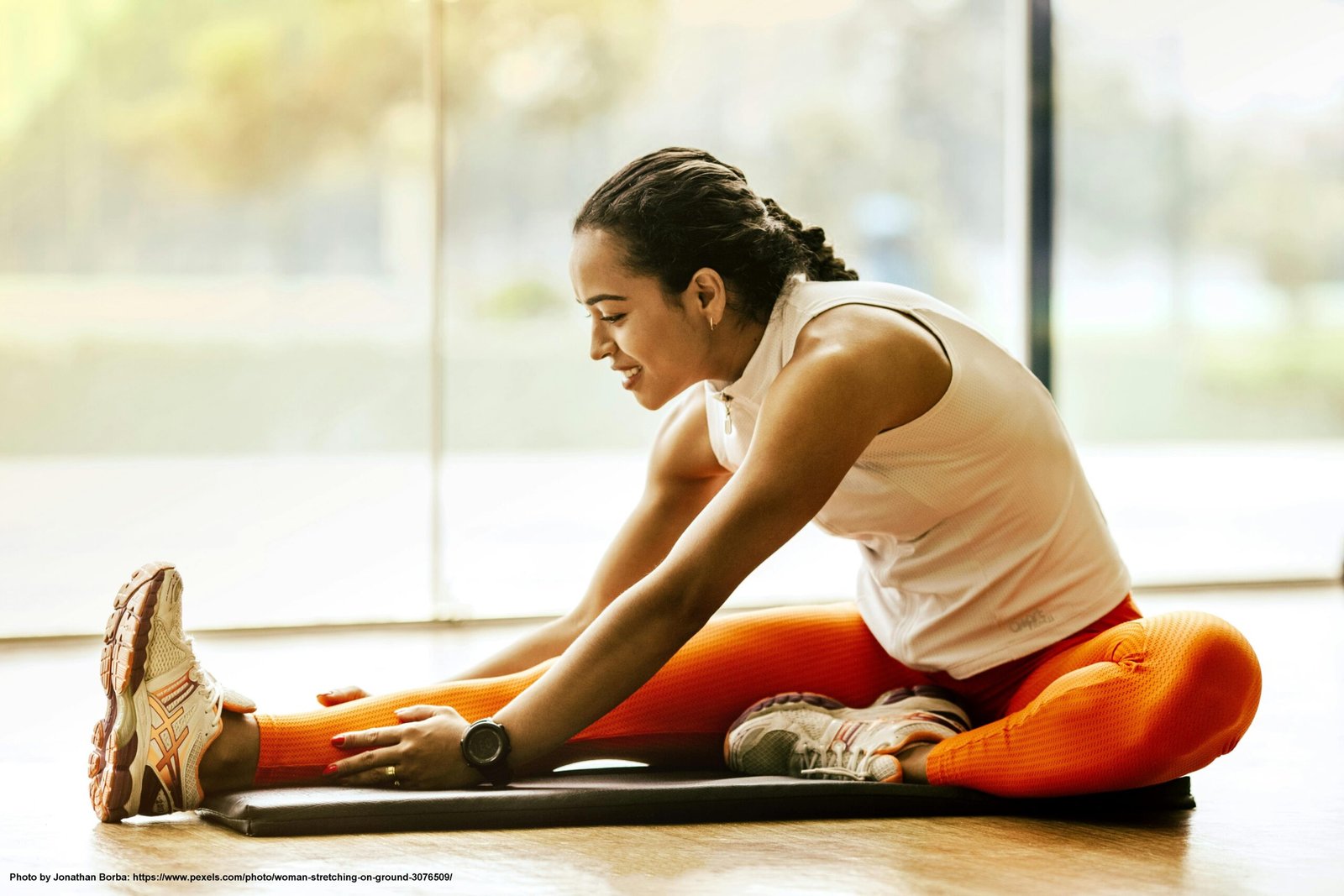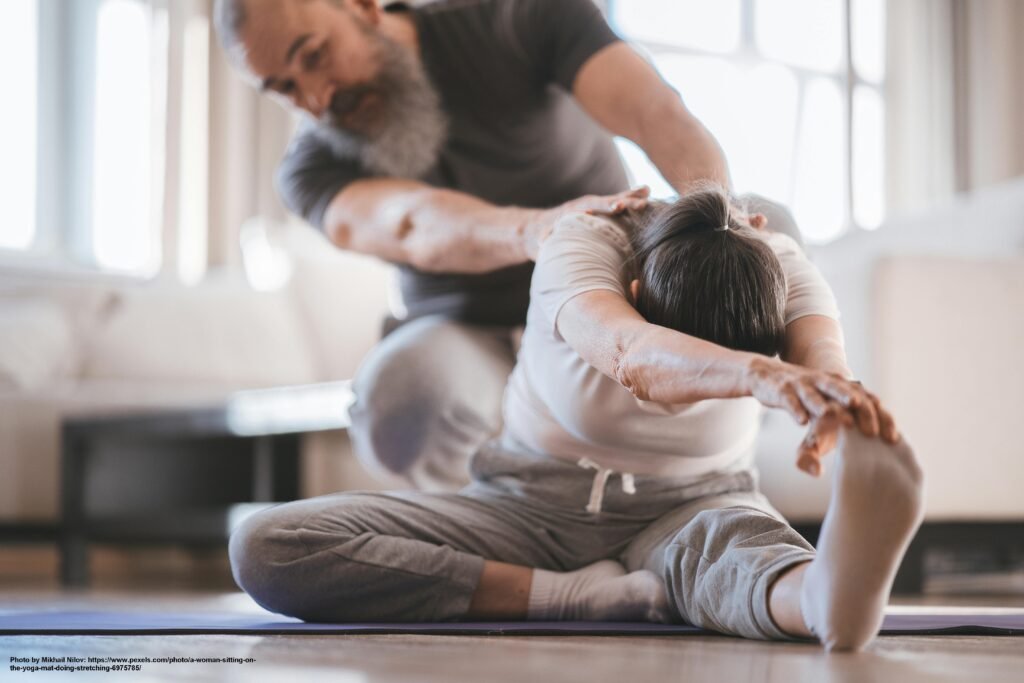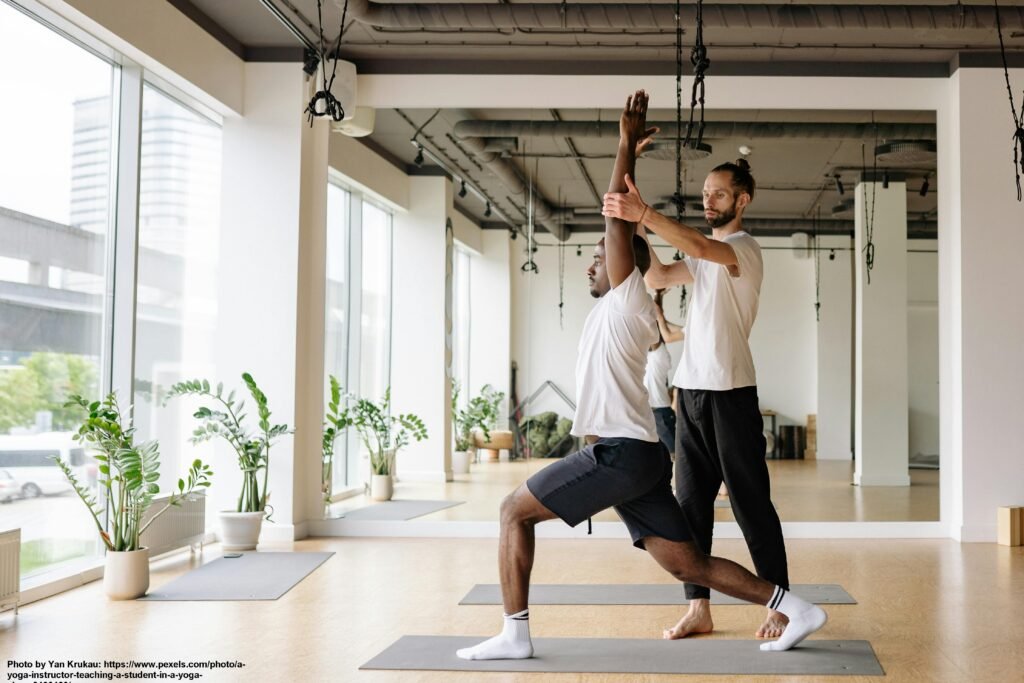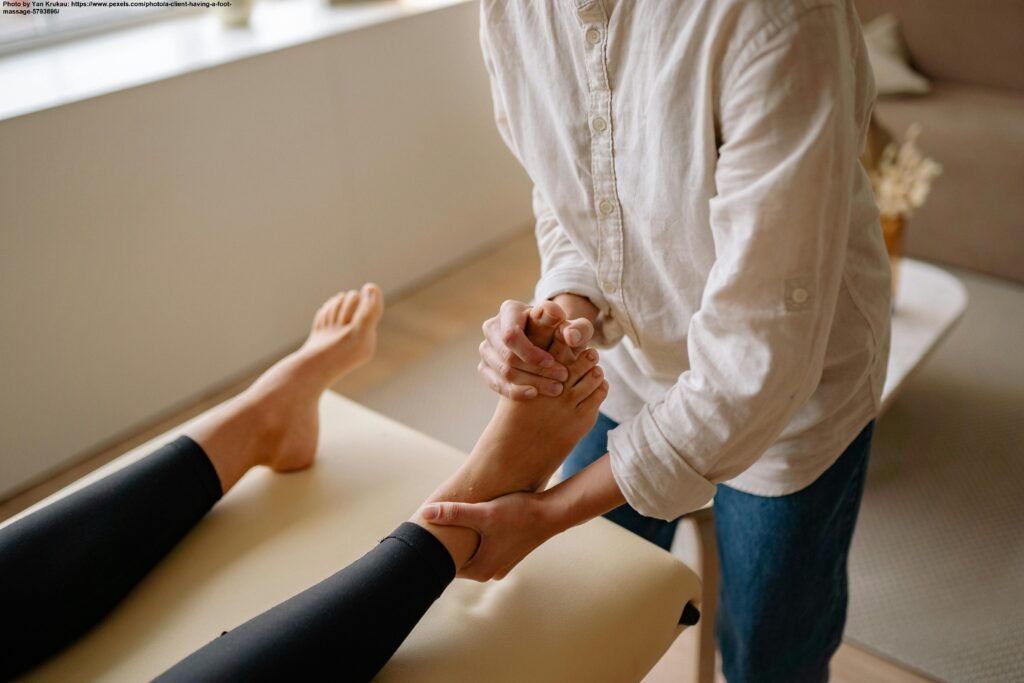Physical Address
304 North Cardinal St.
Dorchester Center, MA 02124
Physical Address
304 North Cardinal St.
Dorchester Center, MA 02124

Life here in the UK moves at a swift pace, doesn’t it? Whether you’re navigating the bustling streets of London, hitting the gym in Manchester, or enjoying a long, invigorating walk through the beautiful British countryside, our bodies are constantly in motion.
But how often do we really give them the focused care they deserve? Let’s talk about flexibility – that often-overlooked foundation of physical well-being. If you’ve been feeling a little stiff, noticing muscle tightness after a long day, or wanting to move more freely and perform better in your workouts, you’re in the right place.
We’re about to dive into the world of assisted stretching – a powerful way to support better range of motion, ease muscular tension, and promote more fluid, comfortable movement. Some techniques may even help reduce the risk of common movement-related strains when practised safely and consistently. The best part? Many of these techniques can be practised right at home—with a partner, a towel, or even a bit of creativity.
So, ready to bend, stretch, and explore a more mobile, resilient version of yourself? Let’s get started.
You might be thinking, “Assisted stretching? Sounds a bit fancy for my living room.” But trust me, it’s far simpler and more accessible than you imagine. At its core, assisted stretching involves using an external force – often a partner, but sometimes a strap or even just your own body weight – to gently deepen a stretch beyond what you might achieve entirely on your own. Think of it like having a supportive guide subtly encouraging you a little further into a stretch, allowing your muscles to relax and lengthen more effectively.
The Science Behind the Stretch
When we stretch, we’re essentially asking our muscles to extend beyond their usual resting length. Our bodies have clever protective mechanisms, like the stretch reflex, which can sometimes cause us to resist going too far. This reflex aims to prevent overstretching and potential injury. However, with assisted stretching, the controlled external force helps to gradually override this reflex, encouraging the muscle to relax and allow for a greater range of motion (Sharman et al., 2006).
One of the most powerful techniques often employed in assisted stretching is Proprioceptive Neuromuscular Facilitation (PNF) stretching. This isn’t just a technical term; it’s a highly effective method that involves a brief contraction of a muscle before stretching it (Sharman et al., 2006). For instance, you might gently push your heel into your partner’s hand for 5-10 seconds, then completely relax, and then your partner gently helps you stretch further. This pre-contraction helps to “reset” your nervous system’s perception of muscle length, allowing for a quicker and more significant increase in flexibility. It’s remarkably effective.
“Can’t I just stretch by myself?” you ask. Absolutely! Self-stretching is vital and should be a regular part of your routine. However, assisted stretching offers several unique advantages, especially when done conveniently at home:
• Deeper Engagement: Using a partner or prop may help you achieve a greater range of motion than stretching alone, making it easier to address areas of tightness with added support.
• Enhanced Relaxation: With external assistance, it’s often easier to relax into a stretch, potentially allowing muscles to lengthen more effectively without the added effort of self-support.
• Improved Form: A partner can offer helpful real-time feedback on your technique, promoting safer execution and more controlled stretching.
• Motivation and Connection: Stretching with a friend can make the experience more enjoyable and social, helping you stay consistent over time.
Whether you’re a seasoned athlete or just beginning your flexibility journey, incorporating assisted stretching at home can be a supportive way to improve comfort, mobility, and overall physical well-being

Alright, let’s get down to the essential moves! These aren’t just random stretches; they’re carefully selected to target common problem areas and provide maximum benefits for your flexibility and overall well-being. Remember, communication is paramount when stretching with a partner. Always tell them how the stretch feels, and critically, never push through pain. Think of this as a cooperative effort, not a test of endurance. Aim for a sensation of a deep, satisfying stretch – perhaps a 6 or 7 out of 10 on a discomfort scale – but never sharp or searing pain.
1. Partner Hamstring Stretch
This one is a perennial favourite for a reason! Tight hamstrings are incredibly common, especially if you spend a lot of time sitting, and they can significantly contribute to lower back pain (Halbertsma et al., 2001).
How to do it:
Why it’s great: Directly targets the hamstrings, which are crucial for optimal hip mobility and alleviating lower back discomfort. This stretch helps to free up your entire posterior chain.
2. Assisted Hip Flexor Stretch
Our hip flexors (the muscles at the front of your hips) can become incredibly tight from prolonged sitting, leading to poor posture and often nagging discomfort. This stretch is a true game-changer for hip mobility.
How to do it:
Why it’s great: Excellent for counteracting the effects of prolonged sitting, significantly improving hip mobility, and effectively alleviating lower back tension.
3. Assisted Quad Stretch
The quadriceps, located at the front of your thigh, can also become very tight, especially after activities like running, cycling, or even just daily stair climbing.
How to do it:
Why it’s great: Effectively releases tension in the quadriceps, which can significantly improve knee health and enhance overall leg flexibility.
4. Assisted Spinal Twist
This is a fantastic stretch for your entire back and can dramatically improve spinal mobility, easing stiffness in your lower back stretch.
How to do it:
Why it’s great: Improves spinal rotation, effectively eases lower back stiffness, and can contribute positively to improved posture.
5. Partner Chest Opener
Many of us contend with rounded shoulders and tight chests due to desk work, driving, or daily habits. This stretch is excellent for opening up the chest and promoting better posture.
How to do it:
Why it’s great: Superbly counteracts the effects of slouching, significantly improving posture and increasing flexibility in the chest and upper body stretch areas.
6. Calf Stretch with Partner
Calf tightness can significantly affect your ankle mobility and even contribute to issues higher up the leg, impacting gait and balance.
How to do it:
Why it’s great: Crucially improves ankle flexibility, which is vital for efficient walking, running, and preventing foot and lower leg issues.
7. Assisted Glute Stretch (Figure-Four)
Your glutes, while powerful, can become tight and impact both hip and lower back comfort. This is a superb stretch for them.
How to do it:
Why it’s great: Targets the glutes and piriformis muscle, which can effectively help alleviate sciatica-like symptoms and dramatically improve hip mobility.
8. Self-Assisted Inner Thigh (Adductor) Stretch
You don’t always need a partner! This stretch ingeniously uses your own body for assistance, targeting a key area for hip mobility.
How to do it:
Why it’s great: Significantly improves flexibility in the inner thighs (adductors), which is essential for overall hip health, balance, and uninhibited lower body movement.
9. Wall-Assisted Pec Stretch
Another excellent self-assisted option for effectively opening up your chest and addressing rounded shoulders. This falls under self-assisted stretching.
How to do it:
Why it’s great: Powerfully stretches the pectoralis muscles, which are often tight from prolonged sitting or upper body exercises, directly contributing to improved posture.
10. Foam Roller Thoracic Extension
While not strictly ‘assisted’ by a person, a foam roller acts as a fantastic prop to help mobilize your upper back, a common area for stiffness, and is a great example of myofascial release at home.
How to do it:
Why it’s great: Crucially improves mobility in the thoracic spine (upper back), which can alleviate stiffness, reduce neck and shoulder tension, and significantly enhance posture. This also contributes to full-body assisted stretch efforts by improving spinal health.

Now that we’ve covered some stellar moves, let’s tackle some of those essential questions you might have. It’s perfectly normal to wonder about the nuances of assisted stretching, especially when you’re integrating it into your home stretching workout.
What are the most effective assisted stretching moves for flexibility at home?
As we’ve just explored, the “most effective” stretches often depend on your individual needs and unique tight spots. However, the Partner Hamstring Stretch, Assisted Hip Flexor Stretch, and Assisted Quad Stretch are arguably among the most universally beneficial for significantly improving overall lower body flexibility. For the upper body and better posture, the Partner Chest Opener and Wall-Assisted Pec Stretch are exceptionally effective. The core principle remains consistency and diligently targeting the areas that feel tightest for your body.
Which assisted stretches target common problem areas like hips and back?
Ah, the hips and back – the common challenges many of us face in modern life! For the hips, the Assisted Hip Flexor Stretch, Assisted Glute Stretch (Figure-Four), and the Self-Assisted Inner Thigh (Adductor) Stretch are invaluable. When it comes to your back, the Assisted Spinal Twist and the Foam Roller Thoracic Extension are excellent choices for increasing mobility and reducing stiffness. Remember, often, a tight area in one part of the body can impact another; for instance, tight hamstrings can contribute directly to lower back pain (Halbertsma et al., 2001). So, a holistic and interconnected approach is always best.
How can I safely perform partner-assisted stretches without injury?
Safety is paramount, folks! This isn’t a test of strength; it’s a gentle, cooperative effort focused on releasing tension.
Here are my top principles for safe partner-assisted stretching:
What equipment or props are needed for best at-home assisted stretching routines?
The true beauty of at-home assisted stretching lies in its minimal equipment requirements. For partner stretches, well, you just need a willing and trusted partner! For self-assisted stretching or general flexibility work, these practical tools can be incredibly useful:
You certainly don’t need all of these to begin, but they can certainly enhance your home stretching workout.
How do assisted stretching techniques improve muscle pliability and injury prevention?
It’s all about enhancing your muscles’ innate ability to lengthen and truly relax. When muscles are habitually tight and shortened, they become more susceptible to tears and strains, particularly during sudden movements or intense physical exertion (Garrett, 1990).
Assisted stretching, especially techniques like PNF stretching, works by:
Think of your body like a finely tuned machine; flexible muscles move more efficiently, are less likely to seize up, and are inherently more resilient.
Can I perform assisted stretching safely without a partner or professional guidance?
Yes, with care. While having a partner can offer unique advantages, many assisted stretching techniques can be modified for solo practice using props or your own body weight. The self-assisted stretches we’ve explored (like the Inner Thigh and Wall-Assisted Pec Stretch) are good examples.
The most important thing is to stay aware of your body’s signals. Move slowly and mindfully, and never force a stretch. You are your own best guide in this context – but if you’re unsure about a particular movement, it’s always wise to refer to reputable sources or seek advice from a certified professional. Helpful resources, such as blog articles and video guides from qualified instructors – including those available on the StretchMasters.co.uk blog page can offer useful guidance and demonstrations, though they should only complement, not replace, professional assessment or instruction where needed.
How often should I do assisted stretches to see noticeable improvements in mobility?
Consistency is key when it comes to flexibility training. For many people, performing assisted stretching 2–3 times per week is a reasonable and effective place to start. Including brief self-stretching sessions daily or after workouts can also help support long-term improvements.
Like any sustainable habit, small, regular efforts tend to yield the best results. Many individuals report feeling more mobile and comfortable after a few weeks, with greater flexibility often observed over several months of dedicated practice (Bandy et al., 1997). As with all exercise routines, it’s important to listen to your body, adapt based on how you respond, and consult a qualified professional if you have any injuries or health concerns.
Is assisted stretching safe for beginners or seniors?
In many cases, yes – assisted stretching can be safe and beneficial for beginners and older adults, provided that appropriate modifications and precautions are taken. For beginners, it’s important to start slowly, pay close attention to proper technique, and communicate clearly with your stretching partner. Don’t rush to achieve maximum flexibility – progress is gradual and should feel comfortable and controlled.
For seniors, assisted stretching may help support mobility, reduce stiffness, and promote general comfort in daily movement. However, the following precautions are essential:
• Consult a healthcare professional: Especially if there are medical conditions such as joint replacements, osteoporosis, or balance issues.
• Emphasise gentle, controlled movement: Avoid bouncing or forced stretching.
• Prioritise comfort: Stretching should never be painful. Discomfort is a sign to ease off.
• Use support for stability: Chairs, walls, or props can help maintain balance and prevent falls.
Many assisted stretching techniques can be adapted to suit individual needs, including those with limited mobility. With guidance and care, these routines can be a helpful addition to an overall movement or wellness plan.

What are the main benefits of assisted stretching versus self-stretching?
While both forms of stretching techniques are undeniably valuable, here’s a quick comparison to highlight the unique advantages of assisted stretching:
| Feature | Self-Stretching | Assisted Stretching (with Partner/Prop) |
| Depth of Stretch | Limited by individual strength and intrinsic flexibility | Can achieve significantly deeper ranges due to external, controlled force |
| Muscle Activation | Primarily active engagement of the stretching muscle | Can allow for greater passive relaxation of the stretched muscle, promoting lengthening |
| Feedback | Relies solely on self-awareness and proprioception | Partner can provide invaluable real-time feedback on form, alignment, and limits |
| Techniques | Often static or active isolated | Can more effectively utilize advanced techniques like PNF stretching |
| Effort | Requires more active muscular effort to maintain position | Allows for more passive relaxation into the stretch, aiding in deeper release |
| Accessibility | Can be done anywhere, anytime | Requires a partner or specific props for certain moves, but still highly accessible at home |
| Motivation | Self-driven, requires internal discipline | Can be more motivating and enjoyable, even a social activity, when done with a partner |
As you can see, assisted stretching can often enable you to gently explore a greater range of motion – particularly in complex or persistently tight muscle groups – potentially supporting more noticeable flexibility gains over time when practised safely and consistently at home.
What should I wear or prepare before an at-home stretching session?
Keep it simple and comfortable for your home stretching workout!
Can assisted stretching improve posture and range of motion?
In many cases, yes. Improved posture and range of motion (ROM) are commonly reported benefits of consistent assisted stretching.
• Posture: Postural imbalances are often linked to muscular tightness—for example, shortened chest muscles may contribute to rounded shoulders, while tight hip flexors can influence pelvic positioning. By lengthening these restricted muscles and supporting the function of their opposing counterparts, assisted stretching may contribute to better alignment and a more upright, balanced posture. Techniques like the Partner Chest Opener and Foam Roller Thoracic Extension can be especially helpful in targeting these areas.
• Range of Motion (ROM): One of the most direct effects of stretching is increased flexibility in muscles and surrounding tissues, which can allow joints to move more freely through their full range. This can make everyday movements feel easier and smoother, and may support better performance in sport and exercise while helping to reduce the risk of movement-related discomfort or strain (Behm & Chaouachi, 2011).
Think of your body as a system of levers and pulleys—when muscles become chronically tight, they can restrict movement and efficiency. Assisted stretching helps gently lengthen these tissues, supporting improved mobility and overall function.
What is the difference between dynamic, static, and PNF stretching?
These are distinct approaches to stretching techniques, each with its own benefits and optimal use cases:
| Stretching Type | Description | Best Used For | Example |
| Static | Holding a stretch in a fixed position for a sustained period | Increasing long-term flexibility; post-workout cool-down and recovery | Touching your toes and holding the stretch |
| Dynamic | Moving a limb through its full range of motion repeatedly in a controlled manner | Pre-workout warm-up; actively preparing muscles for physical activity | Controlled leg swings, arm circles |
| PNF | The contract-relax method to inhibit the stretch reflex for deeper, more rapid gains | Rapid flexibility improvement; rehabilitation from injury; significant muscle energy techniques | A partner hamstring stretch incorporating a push-hold-relax sequence |

Well, there you have it – a practical and informative guide to some of the best assisted stretching moves you can try at home, right here in the UK. We’ve explored the “why” behind the stretch, walked through a range of useful “how-to” techniques, and addressed common questions with clarity and care. Hopefully, you’re now feeling inspired and ready to start your journey toward more comfortable, fluid movement.
Remember, flexibility isn’t just about touching your toes – it’s about moving through life with greater ease, helping to manage everyday muscular tension, and supporting injury prevention through better movement awareness. Whether you’re working with a partner for deeper stretches or trying out self-assisted methods, consistency is the key. Start gently, listen closely to your body, and take time to appreciate every bit of progress along the way.
Curious to learn more? The team at StretchMasters®offers expert-led stretching sessions and a growing library of insightful blog content. It’s a great place to find additional tips, techniques, and evidence-informed guidance to complement your home routine.
So why not take the next step? Set aside some space, invite a friend, and ease into your new routine. Which stretch will you try first? Share your experiences in the comments – we’d love to hear how you’re getting on.
Related Blogs from Stretchmasters.co.uk:
References
Bandy WD, Irion JM, Briggler M. The effect of time and frequency of static stretching on flexibility of the hamstring muscles. Phys Ther. 1997 Oct;77(10):1090-6. doi: 10.1093/ptj/77.10.1090. PMID: 9327823. https://pubmed.ncbi.nlm.nih.gov/9327823/
Behm, D. G., & Chaouachi, A. (2011). A review of the acute effects of static and dynamic stretching on performance. European Journal of Applied Physiology, 111(11), 2633-2651. https://pubmed.ncbi.nlm.nih.gov/21373870/
Fradkin, A. J., Zazryn, T. R., & Smoliga, J. M. (2010). Effects of warming-up on physical performance: a systematic review with meta-analysis. Journal of Strength and Conditioning Research, 24(1), 140–148. https://doi.org/10.1519/JSC.0b013e3181c643a0
Garrett WE Jr. Muscle strain injuries: clinical and basic aspects. Med Sci Sports Exerc. 1990 Aug;22(4):436-43. PMID: 2205779. https://pubmed.ncbi.nlm.nih.gov/2205779/
Halbertsma, J. P. K., Göeken, L. N. H., Hof, A. L., Groothoff, J. W., & Eisma, W. H. (2001). Extensibility and stiffness of the hamstrings in patients with nonspecific low back pain. Archives of Physical Medicine and Rehabilitation, 82(2), 232–238. https://doi.org/10.1053/apmr.2001.19786
Sharman, M. J., Cresswell, A. G., & Riek, R. F. (2006). Proprioceptive neuromuscular facilitation stretching: Mechanisms and clinical implications. Sports Medicine, 36(11), 929-939. https://doi.org/10.2165/00007256-200636110-00002
Disclaimer:
The content on this blog is provided for general information and wellness purposes only. It should not be considered medical advice, diagnosis, or treatment. StretchMasters® services, including assisted stretching, are intended to support overall wellbeing and are not a substitute for professional healthcare guidance. While reasonable care has been taken in preparing and verifying the information presented in this blog, StretchMasters® makes no claims, representations, or guarantees regarding its completeness, accuracy, reliability, suitability or availability with respect to the website or the information, products, services, or related graphics contained on the website for any purpose. This content is intended for general informational purposes only and is not a scientific article. Inconsistencies, inaccuracies, or errors — including in paraphrasing and citation — may be present. Any reliance you place on such information is therefore strictly at your own risk. We strive to ensure that all information is accurate and up to date; however, due to the evolving nature of health research, we cannot guarantee that all content reflects the latest evidence. Additionally, external links shared in blog posts may change, be updated, or become inactive over time without notice. Always consult with a qualified medical professional before starting any new therapy, especially if you have existing health conditions. StretchMasters®, its parent company Skuil Ltd, and affiliated clinics accept no liability for decisions made based on this content. Opinions expressed in individual blog posts are those of the authors and do not necessarily reflect the views or policies of StretchMasters® or its subsidiaries. Any reference to third-party organisations, websites, services, or products is not an endorsement.